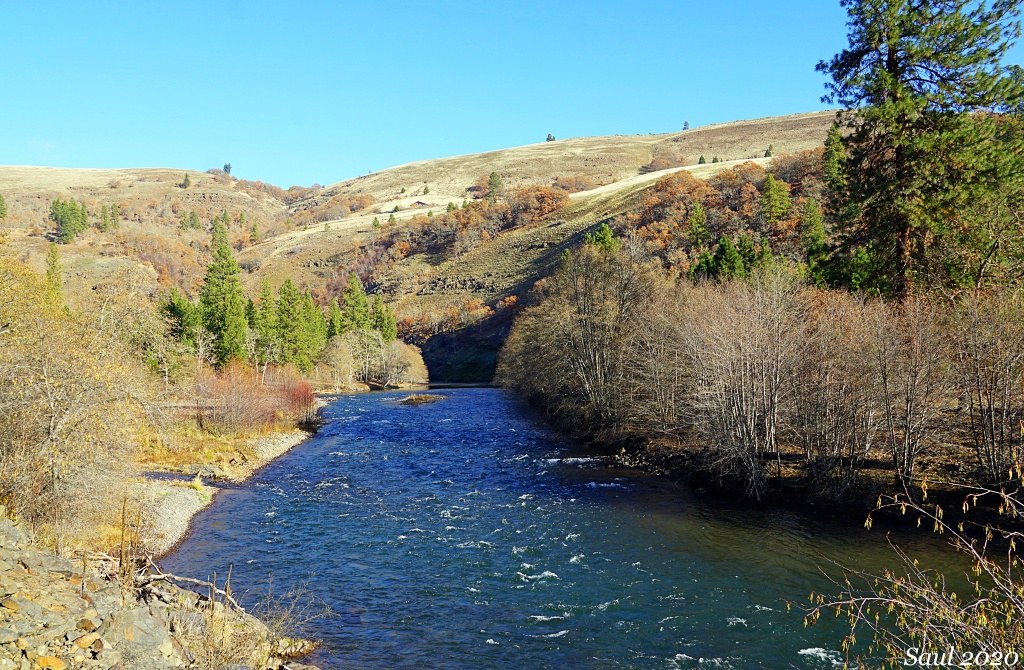We started our hike in frosty, 34 degrees air temperature in the shade of the high ridges that rim the Klickitat River canyon. Bundled up in multiple layers, hats and gloves, we walked the road to the end of pavement at 1.2 miles, then continued on gravel until the decommissioned road turned to trail along the river bank.
Columbia Land Trust, which owns the former privately-owned log haul road, recently installed interpretive signs along the route to tell the story of the nearly 20 year effort to decommission 8 miles of road in partnership with the Yakama Nation. We stopped to read each of the signs.
“These signs are stories that help connect people with the rationale behind the project,” said Lindsay Cornelius, Natural Area Manager for the Land Trust. “To see the site from a different perspective than they may otherwise have seen it. People can also learn about the proactive measures they can take to help continue the recovery process.”
“There are so many different people, plants, and animals interacting with this river, and who have throughout history, these signs don’t do the depth and richness of that history justice,” said Cornelius. “I think the way we honor the past is to step thoughtfully into the future, with good stewardship, open minds, and willing hands.”
We hiked up 3.5 miles to the point where a backwater area must be waded to continue onward. That made a good turnaround point to retrace our steps back to the trailhead.
According to the Land Trust, the restoration area has an unmaintained, non-engineered, path through much of the corridor, except where water has been returned to channels in the footprint of the old road. The floodplain is a dynamic place, with new channels, fluctuating water levels, wood and sediment deposits, and naturally eroding banks. Hikers should be prepared for remote, wilderness conditions. Bikes are not recommended in the interior due to extensive obstacles.
The only other people we saw all day were fly fishers and none of them appeared to be successful. We also saw many bald eagles, including an adult carrying a lamprey it had just caught and followed by its offspring begging to be fed. We also saw lots of dippers and kingfishers along the river. The uplands were busy with both California scrub jays and Stellar's jays, dark-eyed juncos, turkeys, and flocks of pine siskins feeding on the cones of white alder trees.
The air temperature had warmed to 43 degrees by the time we finished the hike, but it still felt cool in the shade.







Comments